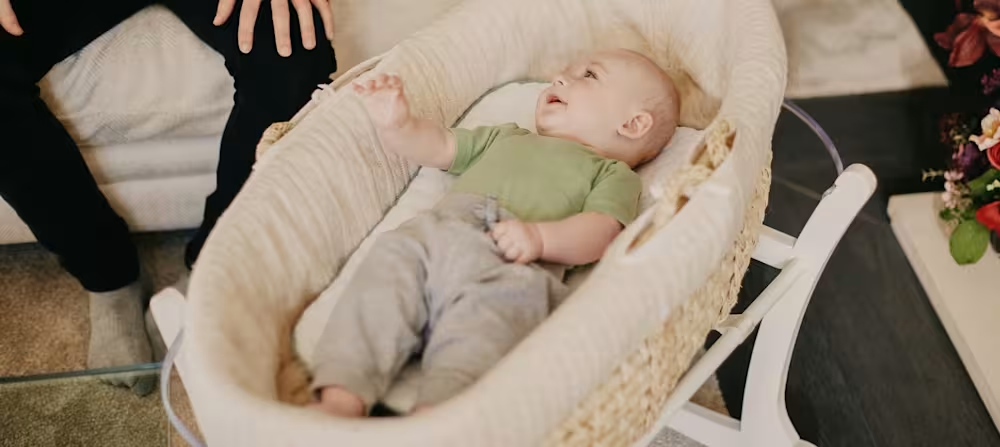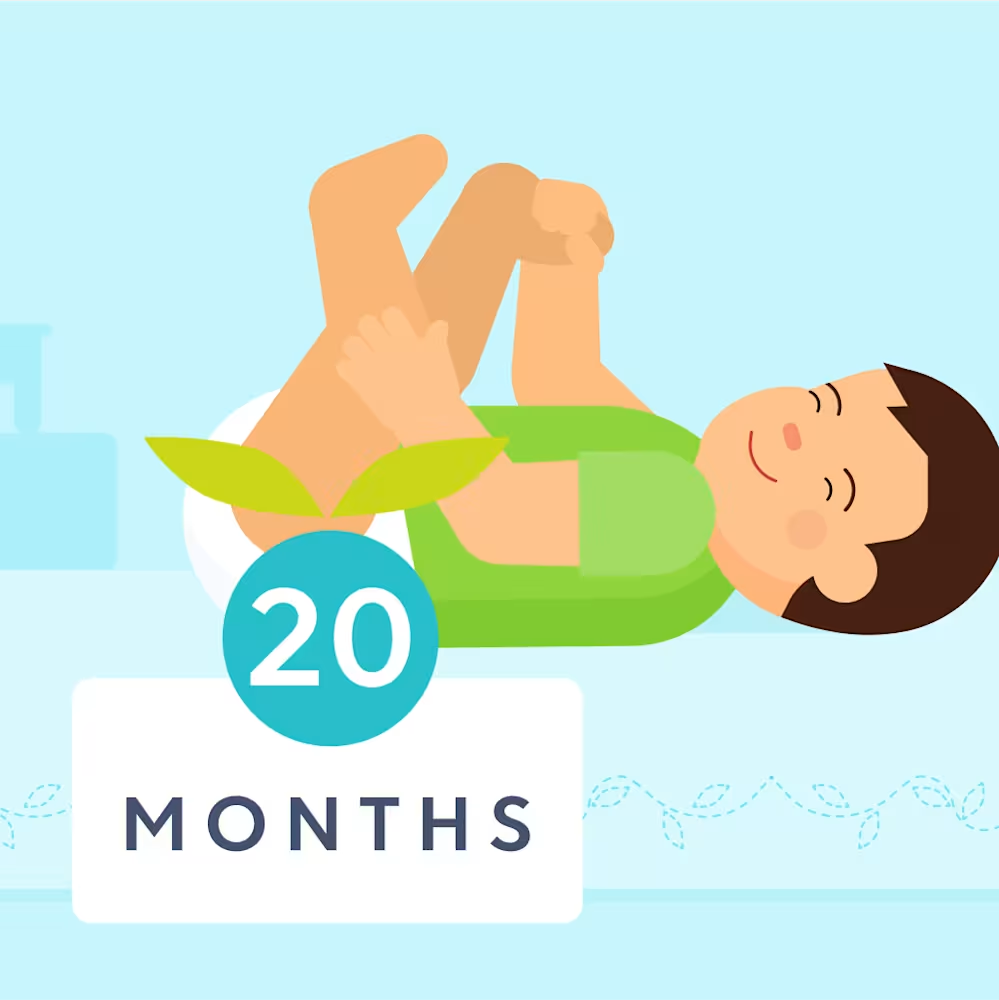Tips and tricks for siblings sharing a room
Updated Oct 16, 2025

Whether you’re tight on space or want your children to have that experience of sharing a bedroom with a sibling, figuring out when and how to transition your two children into the same bedroom can be a challenge! They have different bedtimes, different morning rise times, and you’re worried about whether anyone will get any sleep at all! Don’t worry, we can help!
7 tips and tricks for siblings sharing a room
Here are some tips for siblings sharing a room:
Set up their shared room
Make a plan
Decide when to start
Set expectations
Make a backup plan
Honor individual sleep needs and schedules
Nap in different rooms, at least to start
Find more details below:
Tip #1: Set up their shared room
Before you have your children move into the same bedroom, make sure their space is and sleep-ready. You’ll want each child to have their own separate sleep space, such as a crib or bed. Even for twins and multiples, the American Academy of Pediatrics (AAP) recommends separate sleep spaces []. Each child will feel special knowing they have their own bed, their dresser, and maybe even their nightstand. Using a white noise machine can help prevent one child’s sounds from waking the other.
Some parents may feel tempted to transition their child from a crib to bed when they combine both siblings into the same room. This can be understandable especially if the younger child was sleeping in a pack-n-play or mini crib while room sharing with their parents and now needs a larger sleep space.
The AAP recommends transitioning your child to a bed once they’re 35 inches tall (typically between the ages of 18 - 36 months of age) []. This is because most falls from cribs happen when kids attempt to climb out of the crib and this is most likely once the crib rail is at chest level. However, most toddlers won’t have the impulse control necessary to keep their bodies in a big kid bed at this age. If your child isn’t attempting to climb out of the crib, not only will the transition to a big kid bed be much smoother when they are closer to the age of 3, but keeping them in their crib will also make the transition to room sharing with a sibling much less chaotic too! Not sure if your child is ready for a big kid bed?
Younger children may not need their own personal space within the room. But, as they grow older, a dividing line or physical barrier in the room can provide a reminder of whose toys go where or who should play where. Just be mindful that if your children do play together in their room sometimes, having a dividing line or barrier could be confusing if they’re allowed to cross it some of the time, but not all of the time.
Tip #2: Make a plan
Of course, it’s always easier to transition two children into the same bedroom if they’re both already great sleepers! While your little sleepers may not be perfect, ideally you’ll want to wait until they’re both able to fall asleep independently at the beginning of the night and sleep through most of the night before you combine them into the same room.
If your baby still wakes up a lot at night, fear not! Before combining them into the same room, make a plan to teach them how to fall asleep on their own as this can limit calls for your help during the night []. You can choose to work on sleep skills with your younger child in your bedroom or a separate room of the house first. Once your youngest is waking no more than once or twice in the night then you can make a plan for how you’ll combine them.
You can also work on having some of your younger child’s naps in that new room first, especially if your older child either doesn’t nap, naps at daycare, or has a different naptime. This will help them get used to their new room before spending the whole night there.
If your older child is sleeping well already, consider having them sleep in a different room of the house temporarily while your youngest gets comfortable in the new room. You can make this a fun sleepover in the guest room, a fun sleepover with a parent in the family room, or even a night away at a local grandparent’s or other family member’s home if that’s an option. In any case, one or two nights when your younger child can get accustomed to their new room will help make the transition a smooth one.
If you don’t have the option to move your older child temporarily out of the shared bedroom, that’s okay too! When you’re ready, move your younger child into the shared space. Make sure to communicate with your older child that their younger sibling may need a few nights to adjust to their new surroundings.
For twins or children closer in age, consider which child is the more sensitive sleeper. We recommend helping your more sensitive sleeper get used to the new room first. Once they’re sleeping pretty well then you can introduce the less sensitive sleeper into the room.
For more information on how to pick the right method to teach your child independent sleep skills, .
Tip #3: Decide when to start
The AAP recommends that infants should sleep in the same room with their parents but on a separate sleep surface for at least the first 6 months of their life. The AAP also recommends nothing else be in your baby’s crib for the first year of life.
Since well-intentioned toddlers and/or older children may place objects into your baby’s crib without you realizing it, here at Huckleberry we recommend holding off on transitioning siblings into the same room until after your youngest child is at least 1 year of age. Whether you wait or not, having a video monitor in the room can be helpful so you can ensure everyone’s safety as they work on resting their bodies and falling asleep. For more information on crib safety, read .
Eager to transition your infant before their first birthday? You could have your baby temporarily sleep in a different location of your home if you’re ready for your baby to have their own room after 6 months. Or, if you’re tight on space, it can make sense to keep your younger child in your own room for a bit longer, until they turn 12 months. Since twins will each be in their own cribs they can share a room earlier without that safety risk.
Tip #4: Set expectations
Many toddlers and young children are receptive to their parents’ instructions so make sure to have an age-appropriate family meeting before you combine siblings into the same room. Let your toddler or young child know what their bedtime routine will look like once they’re sharing a room. Make some sleep rules that you talk about frequently and/or post near where their bedtime routine occurs.
Some great sleep rules can include “we don’t wake up other sleeping people” and “at night we rest our bodies and stay in bed, asleep until it’s time to start the day”. Then, stay consistent with your routines and rules. If your older child is having trouble staying in their bed, read this article on how to use .
You’ll also want to let your older child know that you, as the parent, will handle all of each child’s sleep needs as necessary. If your older child is woken up by their younger sibling, you can let them know to roll over and work on getting back to sleep. As the parent, you will be responsible for responding to your younger child as needed. You are always there listening and keeping watch, so it’s okay for your older child to get back to sleep without worrying.
Tip #5: Make a backup plan
Sleep regressions and illnesses can wreak havoc on bedtime routines and sleep duration and quality. While you’ll want to be consistent with having your children sleep in their own sleep spaces and with your sleep rules, sometimes a little reset is called for! If sleep is going off the rails, consider temporarily moving one of your children to a different room. This way everyone can re-learn their sleep skills while getting the rest they need. Once everyone is back on track you can move them in together again.
For more information on . You may not need your backup plan but it’s better to create one ahead of time because sometimes when your children aren’t sleeping your own fatigue can get in the way of you thinking clearly and problem-solving.
Tip #6: Honor individual sleep needs and schedules
Your children are likely different ages and therefore will have different sleep needs, bedtimes, and rise times, and that’s okay! Even if you have twins or multiples, one may require more sleep than the other. Depending on how many naps each of your children take, it’s possible that your older child’s bedtime may be earlier or later than your younger child’s. Sometimes staggering bedtimes are more ideal as it gives one child the opportunity to fall asleep alone in their room. The child with the later bedtime can then fall asleep more easily without the other child talking or disrupting their attempts.
This can also be a great time to introduce a toddler clock or “okay to wake clock”. Set the clock’s light to turn on at a time when it’s okay for your toddler or young child to get out of bed and start their day. Instruct them to stay in bed resting their body until the light turns on. If you’d like your younger child to sleep later, make sure to place the clock where the light won’t be brightly shining directly on him/her.
See what different schedules could look like for your kiddo’s age group by using our .
Tip #7: Nap in different rooms, at least to start
Falling asleep at naptime can be more difficult than falling asleep at bedtime for babies, toddlers, and young children. Our sleep pressure and sleep hormones [] are different at naptime compared to bedtime and sometimes the room is a little brighter too.
For this reason, we recommend starting off the transition with your children napping in separate rooms. This way, everyone stays well rested. If both of your children are doing well napping, you can try combining them if you don’t have the extra space. Just know that you may need to utilize that backup plan from time to time if they do have difficulty settling down to nap.
Sibling room sharing ideas
When you first move your two children into a shared room, you may wonder how you should set up and decorate the room. Younger toddlers and babies may not have a strong preference for the decor you choose. These days there are so many non-gender-specific decor options so even if your kiddos are of different genders you should have no trouble finding decor to suit both.
As they grow up they may start to develop preferences, so at some point, you may want to consider letting them use their room to express their uniqueness. You can let each child select their favorite bedding and wall decor.
It’s also a good idea to allow each child to have their own furniture in the room if space allows. If you’re tight on space, even designating certain drawers for each child can give them a sense of ownership.
When they’re very little it’s a good idea to keep extra toys that could be played with instead of sleeping out of the bedroom. But, as they grow older and more responsible, you can allow them each to keep some toys of their own choosing in their room as well. You can label storage bins or drawers with each child’s name so they know where to place their belongings when they aren’t being played with.
Sleep training while sharing a room with a sibling
We recommend having great, or at least pretty good sleepers before you move them into the same room if possible. Keep your baby in your shared room (or a different room of the house if they’re over 6 months) until you’re confident you’re ready to make the change. Work on teaching your child to fall asleep on their own at the beginning of the night in your shared room first. You’ll likely still have to address subsequent night wakings/feedings via a weaning process. For more information on . We also have articles on the and the .
When you and your children are ready, move the more sleep-sensitive child, usually the younger sibling, into their shared room for bedtime. Make it a special time for your older, less sleep-sensitive, child with a fun sleepover in the family room with either parent or even have them sleep at a grandparent’s house for a night or two. This will give you the opportunity to help your younger, or more sleep-sensitive child, learn to sleep in their new space without the worry that their sounds will wake their sibling. Once your baby is waking just once, twice, or less each night, re-introduce your older child back into their shared bedroom.
If you have concerns about your more sleep-sensitive child accepting their crib in their new room, consider spending a few days working on helping them to love their crib before you make the transition. When it’s daytime and not time to sleep, go into the new room with your baby. Have your baby lay or sit in their crib while you stay extra close, at eye level, and interact with your voice and via touch. Once your baby is able to contentedly hang out in their crib with you right there, move away from the crib just a little bit while still maintaining eye contact and interacting with your voice. Once they can do that, try turning your back and eventually walking out of the room while speaking. This way your baby will know you’re still there even though you’re out of sight. Once they can do that, they’re ready to sleep in their crib!
Sibling room sharing benefits
Sometimes you just need your two children to share a bedroom because you simply do not have enough room in your home to have them in two separate rooms. In this case, the benefit is space-saving. But, are there other benefits too?
A furniture company in the United Kingdom conducted a small survey of 2000 residents asking about their experiences sharing a room with a brother or sister []. 46% indicated that sharing a room was a very positive experience. Two-thirds of respondents said that sharing a room taught them about understanding and respecting boundaries.
From personal experience, sibling room sharing allowed my twin boys to babble and eventually chat with one another first thing in the morning and before drifting off to sleep at bedtime too. Now that they’re older and in bunk beds, they love to cuddle with each other first thing in the morning. This special time away from parents has helped them to develop a close bond that we have just loved witnessing.
Takeaway
Transitioning siblings to the same room can be fun — and challenging! Some tips for sharing a room include: setting up a shared room together, making a solid plan (and a backup plan), setting expectations, honoring individual sleep needs and schedules, and having children nap in separate rooms to start.
We recommend that children are good sleepers before you move them to the same room as possible, to minimize sleep disruptions. Due to safety considerations, we also advise that the younger sibling is at least 12 months before sharing a room with an older sibling.
Shared a room can be beneficial for saving space and can also help siblings develop a close bond.
Sibling room sharing FAQ
Share article:
Note: The content on this site is for informational purposes only and should not replace medical advice from your doctor, pediatrician, or medical professional. If you have questions or concerns, you should contact a medical professional.







